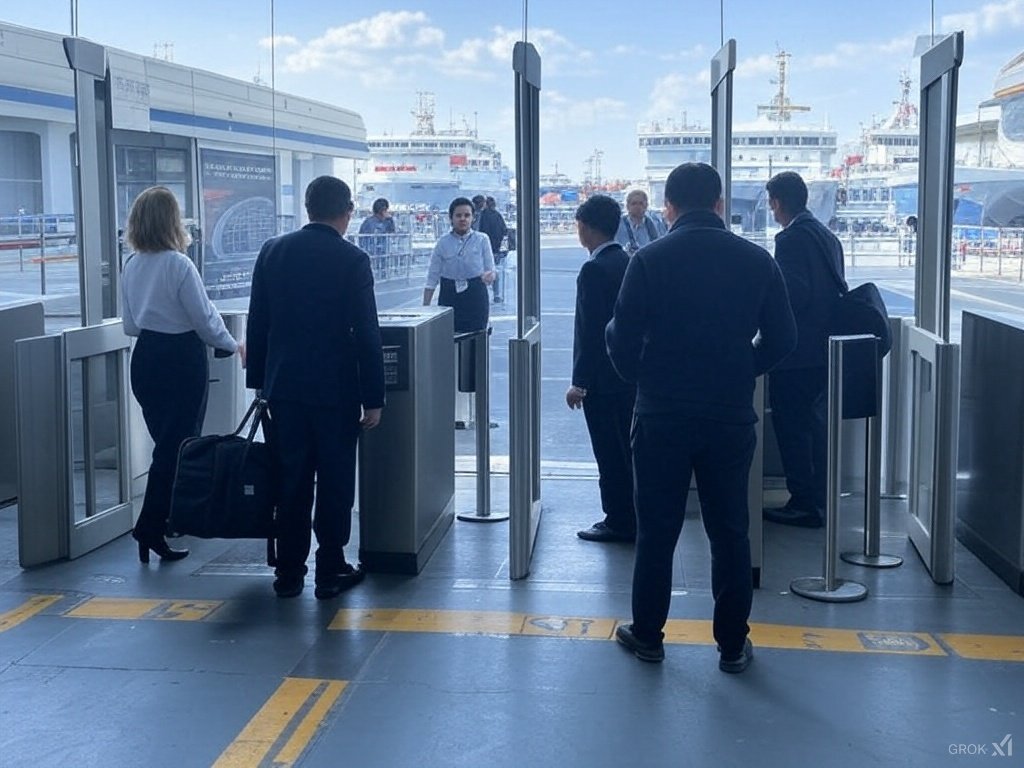AI Video Analytics: Revolutionizing Airport Security

Airports, bustling hubs of global connectivity, face an ever-increasing challenge in maintaining robust security measures. Traditional methods often struggle to keep pace with evolving threats and the sheer volume of passengers and baggage passing through daily. This is where Artificial Intelligence (AI) video analytics steps in, offering a transformative approach to enhance safety, efficiency, and overall security posture. Welcome to the future of aviation security, driven by intelligent technology.
This article delves into how major airports are leveraging AI video analytics to revolutionize their security operations. We'll explore specific applications such as advanced passenger screening, intelligent baggage tracking, and comprehensive perimeter security. By understanding the capabilities and benefits of these AI-powered solutions, we can gain insights into how they are shaping a safer and more secure travel experience for everyone.
Enhancing Passenger Screening with AI
Traditional passenger screening methods, while necessary, can be time-consuming and prone to human error. AI video analytics offers a powerful complement to these methods, enabling faster, more accurate threat detection and improving the overall passenger experience.
Advanced Threat Detection
AI algorithms can be trained to identify suspicious behaviors, objects, or anomalies in real-time, alerting security personnel to potential threats. This includes:
- Behavioral Analysis: Identifying individuals exhibiting unusual or suspicious movements, such as loitering, erratic walking patterns, or displaying signs of distress.
- Object Detection: Automatically detecting prohibited items like weapons, explosives, or other dangerous goods concealed on a person or in their belongings.
- Facial Recognition: Matching faces against watchlists of known or suspected individuals, enhancing border control and identifying potential security risks.
By automating these detection processes, AI reduces the burden on security personnel, allowing them to focus on responding to actual threats and minimizing false alarms.
Queue Management and Optimization
AI can also play a crucial role in optimizing passenger flow and reducing wait times at security checkpoints. By analyzing video feeds, AI algorithms can:
- Monitor Queue Lengths: Accurately track the number of people in each queue in real-time.
- Predict Wait Times: Forecast how long passengers are likely to wait based on current queue lengths and processing speeds.
- Optimize Staffing Levels: Adjust staffing levels dynamically to match passenger volume and minimize bottlenecks.
This leads to a more efficient and less stressful security experience for passengers, improving overall airport satisfaction.
Intelligent Baggage Tracking for Loss Prevention
Lost or mishandled baggage is a major source of frustration for travelers and a significant operational challenge for airports. AI video analytics offers advanced capabilities for tracking baggage throughout its journey, minimizing losses and improving customer satisfaction.

Real-Time Baggage Monitoring
AI-powered video systems can monitor baggage at every stage of the handling process, from check-in to loading onto the aircraft. This includes:
- Automated Baggage Identification: Using optical character recognition (OCR) and image analysis to automatically read baggage tags and track their movement.
- Real-Time Location Tracking: Providing a precise location of each bag at any given time, allowing for quick identification and retrieval.
- Anomaly Detection: Identifying potential issues such as bags being misdirected, left unattended, or handled improperly.
By providing real-time visibility into the baggage handling process, AI enables airports to quickly identify and resolve issues, preventing lost bags and minimizing delays.
Predictive Analytics for Baggage Handling
Beyond real-time monitoring, AI can also leverage historical data to predict potential bottlenecks or problem areas in the baggage handling system. This allows airports to proactively address issues and optimize their operations. For example, AI can:
- Identify High-Risk Transfer Points: Determine which transfer points are most prone to baggage mishandling.
- Predict Baggage Flow Patterns: Forecast how baggage will move through the system based on flight schedules and passenger data.
- Optimize Resource Allocation: Allocate resources such as staff and equipment more efficiently to handle peak baggage volumes.
By using predictive analytics, airports can proactively prevent baggage loss and improve the overall efficiency of their baggage handling operations.
Strengthening Perimeter Security with AI Surveillance
Airport perimeters are particularly vulnerable to security breaches. AI video analytics provides a comprehensive solution for monitoring and securing these areas, detecting intrusions, and preventing unauthorized access.
Intrusion Detection and Alerting
AI algorithms can be trained to detect unauthorized entry attempts along the airport perimeter, even in challenging environmental conditions. This includes:
- Perimeter Breach Detection: Automatically detecting individuals or vehicles crossing designated boundaries.
- Fence Line Monitoring: Identifying breaches or damage to perimeter fences.
- Unauthorized Vehicle Detection: Detecting vehicles approaching restricted areas or exhibiting suspicious behavior.
When a potential intrusion is detected, the AI system can immediately alert security personnel, allowing them to respond quickly and effectively.
Advanced Video Analytics for Perimeter Monitoring
AI-powered video analytics can provide a more nuanced understanding of activity along the airport perimeter, enabling security personnel to identify potential threats before they escalate. This includes:
- Object Classification: Distinguishing between different types of objects, such as people, vehicles, and animals, reducing false alarms.
- Directional Analysis: Tracking the movement of objects and identifying unusual patterns, such as individuals approaching the perimeter fence.
- Dwell Time Analysis: Detecting individuals loitering near the perimeter for extended periods.
By providing a more comprehensive and intelligent view of the perimeter, AI helps security personnel to make better-informed decisions and respond more effectively to potential threats.
The Benefits of AI Video Analytics in Airport Security
The adoption of AI video analytics in airport security offers a multitude of benefits, leading to safer, more efficient, and more secure airport operations. These benefits include:
Enhanced Security
AI provides a more proactive and intelligent approach to security, enabling faster and more accurate threat detection, improved situational awareness, and more effective response capabilities.
Improved Efficiency
AI automates many security tasks, reducing the burden on security personnel, optimizing passenger flow, and minimizing baggage loss, leading to more efficient airport operations.
Reduced Costs
By automating tasks, preventing losses, and optimizing resource allocation, AI can help airports to reduce their overall security costs.
Enhanced Customer Satisfaction
Shorter wait times, reduced baggage loss, and a more secure environment contribute to a more positive and satisfying travel experience for passengers.
AI video analytics is transforming airport security, offering a powerful suite of tools for enhancing passenger screening, baggage tracking, and perimeter security. By leveraging the capabilities of AI, airports can create a safer, more efficient, and more secure environment for passengers and staff alike. As AI technology continues to evolve, we can expect to see even more innovative applications emerge, further revolutionizing the future of aviation security.
Interested in learning more about our AI-powered security solutions? Star our GitHub repository: https://github.com/securade/hub